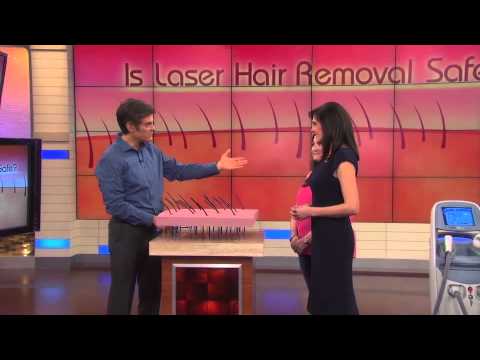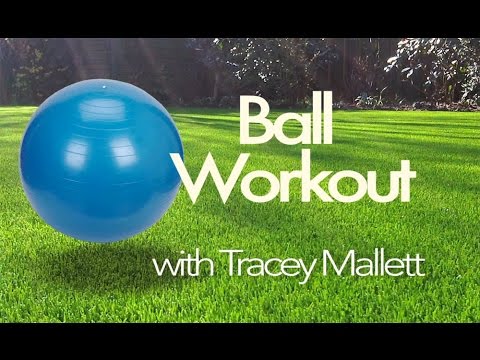http://www.youtube.com/watch?v=oLnQVBNFNOs
Signed up for a six month deal that’s promised you soon will be hairfree for life? Not so fast. Permanent hair removal is a delicate science, and not all the technology advertised is made equal. Here’s what you need to know.
Sick of shadowy stubble the day after shaving but not quite masochistic enough for regular waxing? You’re a prime candidate for permanent hair removal. But before you type your credit card details into an IPL daily deal, there’s vast and tricky science behind using light to effect long-term hairlessness. Let’s face it, you’re sending light strong enough to change the way your body works deep under your skin. And when you consider that light is actually heat, it seems absurd to hand your precious body over to the nearest wand-toting beautician. Such is the concern among clinicians. Dermal therapist James Vivian who has credentials in health sciences and is entrusted to treat the skin of some of the nation’s most visible bodies, warns that cut-price procedures may use inferior machines imported from China – often operated by people with little idea of the biological principles underpinning their zap-work. Not only do light species differ between laser and IPL, but the term ‘laser’ encompasses a spectrum with specific pros and cons, from ineffectiveness to burnt skin. (False economy, much?) We had the experts explain the key differences between the two, breaking down the pros and cons. What’s the best method of battling pesky patches and more importantly, are they safe?
What’s the main point of difference?
The key difference between the two treatments is that IPL uses a broad spectrum of high-intensity light, which is emitted at multiple wavelengths, whereas laser emits a single, focused and precise wavelength that’s optimised for maximum follicle absorption. Laser hair removal therefore results in greater levels of permanent hair reduction per treatment when compared to IPL. Crystal Patel, director at Clinica-Lase in Melbourne says, “As laser has a more precise wavelength than IPL, results are achieved with significantly fewer treatments overall.” However, due to the higher intensity of the light, any skin reactions during the treatment are more likely to be permanent with traditional laser than with IPL.
Do they get rid of hair permanently?
Well, yes and no. IPL and laser treatments both destroy hair follicles, but only a certain percentage of hairs are attached to the follicle at any given time as part of the natural growth cycle. Therefore only the hairs in the active phases will not grow back. “This means that each treatment will result in a greater percentage of permanent hair reduction, which can be up to 90 per cent reduction after six to eight sessions,” says Patel. As such, multiple treatments are required for both. To achieve results, it is important to leave sufficient time between sessions.
How do hormonal conditions impact on their effectiveness?
A person suffering hormonal conditions such as an under- or overactive thyroid, fibroids, endometriosis and post-menopausal bleeding, which alter hair growth, may require more sessions than the average person. Also, your clinician may recommend avoiding hormonal areas, such as the face, back of thighs, nipples or stomach, if the hairs are fine and light in colour as the laser can stimulate the area into producing darker, thicker hairs.
Which treatment is right for your hair and skin type?
There are a few things to bear in mind. Those with fair hair may not find laser hair removal to be effective. As the hair lacks pigment, it’s not possible for the lasers to identify the hair follicles and destroy them. On the other hand, IPL focuses on the melanin, exposing you to the risk of skin pigmentation in areas where there’s not much contrast between skin and hair colour. Some people with darker skin tones therefore find that they can safely get IPL in some areas, but may need to do waxing, threading or use depilatory products in other areas. “The darker the skin, the less effective and safe an IPL can be,” says dermal clinician Maryan Al Talebi from Totally Skin & Beauty. Consult an experienced clinician to ensure you’re getting the right treatment for your skin and hair type.
Which one hurts more?
“Some discomfort may be experienced during and after the treatment for both laser and IPL, the severity of which depends on the individual,” says Patel. Patel recommends finding clinics that use the Candela GentleLASE laser machine, which incorporates a cooling system to counteract the heat. “This results in a significantly more comfortable treatment than alternative laser machines,” she says. Both IPL and laser treatments feel like a gentle pinch or the snap of a hot rubber band when the hand piece is applied and you’ll experience a sunburn-like sensation two to five hours after.
What areas can you treat?
“You can generally laser almost anywhere on the body except the under part of the eyebrows due to it being too close to the eye area,” says Patel. As for IPL, Al Talebi adds, “IPL can be used safely on most areas of the body. The only time it should be avoided is based on skin colouring, with darker skin not recommended.”
Are they safe?
Though generally safe for everyone to undergo, all aesthetic procedures carry an element of risk. Having the treatments administered by an untrained clinician can result in unsightly blistering, burning, scabbing and hyperpigmentation due to the high energy levels required. That’s why it’s important to ensure your skin technician is qualified and that you ask all the appropriate questions during your initial consultation so that you understand how medications, medical conditions, sun exposure, skin type and hormonal changes can affect your response to the treatments. Some medications such as some antihistamines, antidepressants, antibiotics and contraceptives, for example, are light sensitive so make sure your clinician is fully informed.
What precautions should you take?
Though the use of both laser and IPL machines goes largely unregulated in Australia, always ensure the machinery is FDA and or TGA approved and that your clinician carries the appropriate credentials – whether that be a dermal therapies, health science or nursing degree – to operate the equipment. Go to a reputable clinic with trained, experienced staff, and not just any local beautician. “Ask your clinician where they obtained their qualifications from, how long they studied for and how long they’ve been performing treatments,” Al Talebi recommends. “A reputable clinic will always discuss the treatment, including pre-care and after-care, prior to conducting any treatment, and understand the importance of thorough patch testing.”
And be very wary of cheap online deals. These are risky as the types of places offering these deals are often trying to raise quick revenue using low-skilled staff rather than offering quality service.
How long do they take?
This depends on the area size, density of hair, speed of machine and your pain threshold. As a basic guide, both laser and IPL take about 30 to 45 minutes to treat the legs and about 15 minutes to treat facial hair and bikini lines. With laser, six to eight sessions are needed (with five to six weeks between each) while IPL generally requires five to six sessions (with 10 to 12 weeks between each).
When do you start to see results?
When you undergo laser hair removal, all the hairs treated will shrivel during the treatment. “The hairs will then start to shed over the next week or two and the use of a rough loofah is recommended to help this process,” says Patel. As for IPL, you may need four to six treatments and results can be notable from the fourth treatment onwards. After the hair falls out, you should have a hair-free period for up to six weeks.
How much do they cost?
Prices for laser start from as little as $29 for upper lip and can go up to $399 for full legs. Call Clinica-Lase on 1300 513 913 to discuss a pricing package tailored to your needs. IPL can range anywhere from $30 to $800 per session. Yet beware of inexpensive treatments. “Often the cost is relating to the quality of the machine and the training and experience of the operator,” says Al Talebi. To find out more about IPL, call Totally Skin & Beauty on (03) 9614 0400.
Words: Joanna Barry






